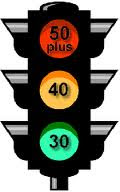In the last two months at least three UFT leadership officials tried to convince me that the ATR incentive was a good deal and if I am planning to retire in June of 2018, I should jump at the chance to get an extra $50,000. Of course, I politely refused the UFT and DOE's generous offer to retire and take the money and fade into educational oblivion. Here is my rationale why I declined to take the ATR incentive.
First, the ATRs who take the $50,000 incentive are really only getting 50% of the money or $25,000 after taxes if a New York City resident. Moreover, the money is not pensionable, meaning that the incentive will not be included in the ATRs pension. Finally, The money will put me into a higher tax bracket for this year, especially with the terminal pay.
Second, any ATR who wanted to take terminal leave, cannot do so, since the incentive does not allow for it.
Third, if the ATR wanted to join
NYSUT's Comprehensive Major Medical Plan, they can't since you must be an active member as of January 1, 2018.
Finally, the largest of the contract raises of 3% will not be available to ATRs who took the incentive.
Obviously, if the ATR was planning to retire anyway or was subject to a 3020-a hearing due to incompetence or misconduct, I can see taking the incentive. However, here are my reasons I didn't take the ATR incentive and its really financial.
First, I'm not ready to retire this school year and the $50,000 is not financially good enough to change my plans and here's why.
By staying for the 2017-18 school year, I increase my pension by the
2% each year adds to the pension. Furthermore, my final average salary will increase by an additional 4.5% due to the increase in the salary scale and it will be my 25th year of service. That means that my pension is expected to increase 6.5% by staying another year. A quick and rough calculation tells me that
I will receive an extra $4,574 annually on my annual pension by staying till June 2018.
In staying an extra year, I will contribute another $24,000 to my TDA and receive a 7% return. By simply taking out the 7% interest annually, I will be getting an extra $1,680. Add that to the pension and I will be making an
extra $6,254 each year and its exempt in New York State from State and Local taxes! Moreover, my ASAF will increase by an additional $140 by staying an extra year
Finally, I expect to have a full semester of
terminal leave and that means an extra 1% increase in my pension, assuming no contract raise for the 2018-19 school year. Therefore, my pension of $57,008, excluding the ASAF, increases to $57,581 Moreover, by adding an extra $12,000 to my TDA, I will also gain an additional $840 of interest income. Add it all together and
excluding the ASAF. I will increase my retirement pay by
$7,666 by staying an extra year, all exempt from State and local taxes!
In four years after retirement I will have already far exceeded the actual take home pay from the ATR incentive. Further, let's not forget the increased Social Security I will receive by adding an extra year on my benefit. Therefore, if you figure out the financial aspects, you can see the ATR incentive is no bargain and that's why I didn't even consider it.



























